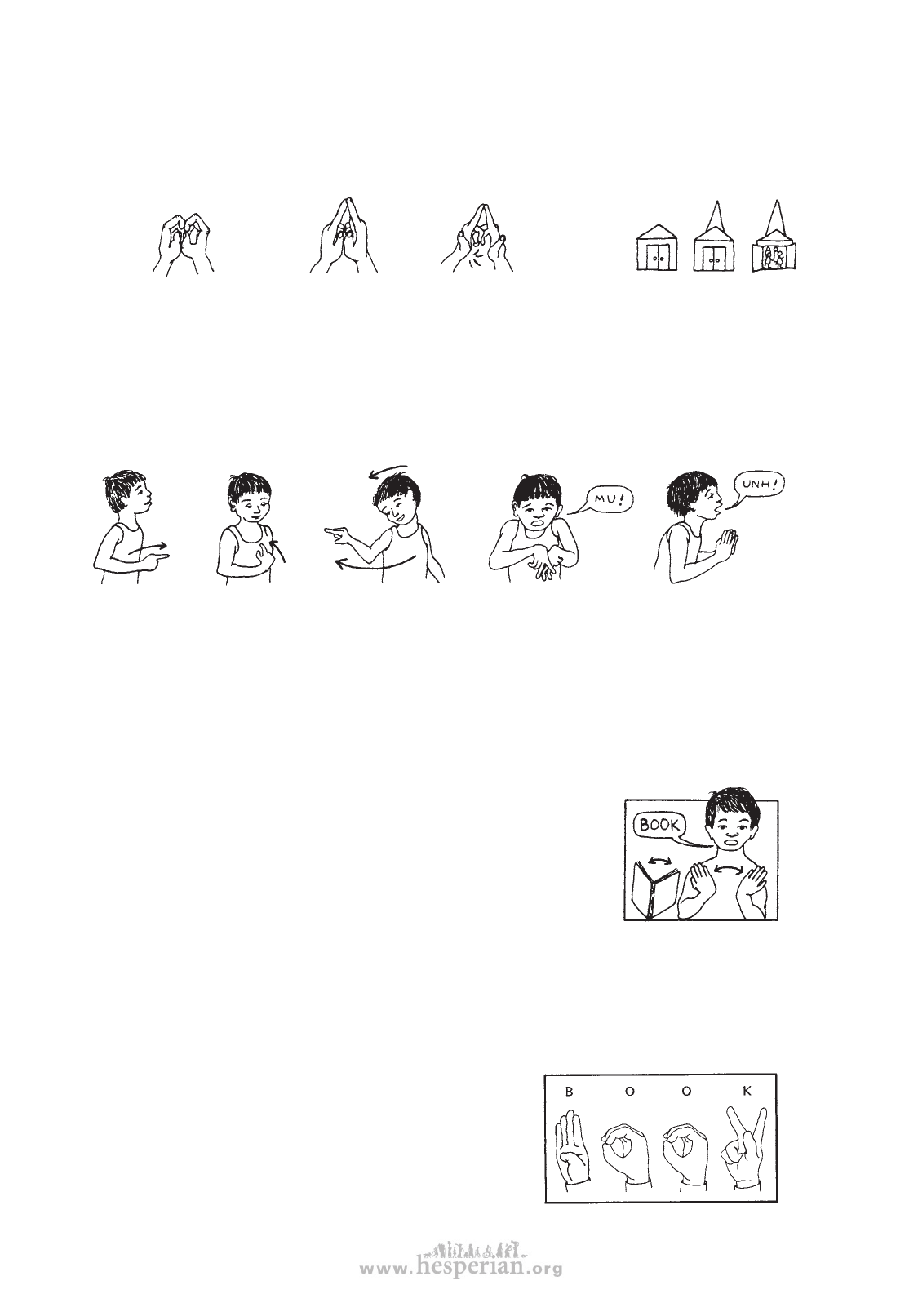
266 chapter 31
SIGN LANGUAGE
In most villages and communities people use and understand many gestures or signs
made with their hands. Most of these signs are ‘common sense’, or look something like
the things they represent. Some children’s games use hand signs. For example:
“Here’s the
church.”
“And here’s
the steeple.”
“Open the
doors.”
“And see all
the people.”
When a family has a deaf child, they begin to use the local signs and also to invent
new ones of their own. For example, at a village rehabilitation center in Mexico, a
family arrived on muleback with their 6 year old deaf son. The boy got nervous and
wanted to go home. So he pulled on his father’s shirt sleeve and made these sounds
and signs:
YOU
and ME
LET’S GO (home)
RIDING THE MULE,
PLEASE!
The family had begun to figure out its own sign language, without having been
taught it. The boy himself had made up the sign for ‘RIDING the MULE’.
The sign language that families develop with their deaf children is usually not very
complete. Communicating is often still difficult. However, people have joined together
to create sign languages which are much more complete. There are hundreds of
different sign languages, but there are 3 main types:
• National and regional sign languages. In nearly all countries, deaf
people have created their own sign languages, in which they can learn
to communicate as well and nearly as fast as hearing people. Different
hand signs represent different things, actions, and ideas. The structure
(grammar) of these languages is different from the spoken language,
and therefore is difficult for hearing people to learn. These
languages are preferred by people who were born deaf. Examples
are American Sign Language (ASL), which is used in the USA and
Canada, and Mexican Sign Language.
• Sign languages based on spoken languages. These languages have the same organization and
grammar as the local spoken language. They are easier for hearing persons to learn and for persons
who became deaf after they learned to speak. Sometimes they use the first letter (finger spelling)
of a word as part of the sign. This is harder for children to learn who cannot read, but can make
learning to read easier and more fun. Examples are English Sign Language and Spanish Sign
Language.
• Finger spelling. Each word is spelled out with hand
signs that represent the letters of the local alphabet. This
method of ‘writing in the air’ is slow but exact. It is easier
for persons to learn who can already read and write.
For English, the British use a 2-handed system and the
Americans use a one-handed system. Try to learn the
system that is most used in your country.
Disabled village Children